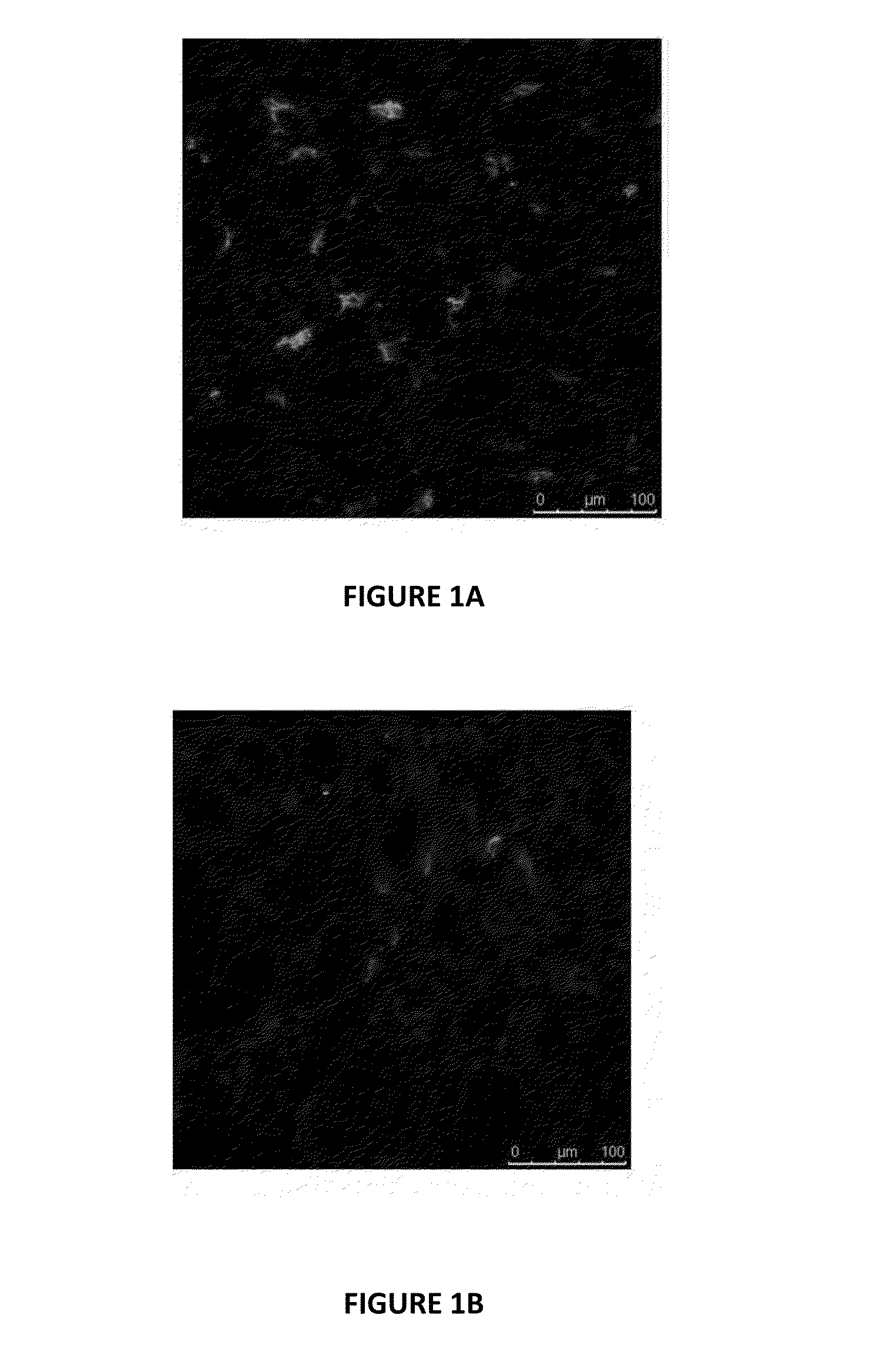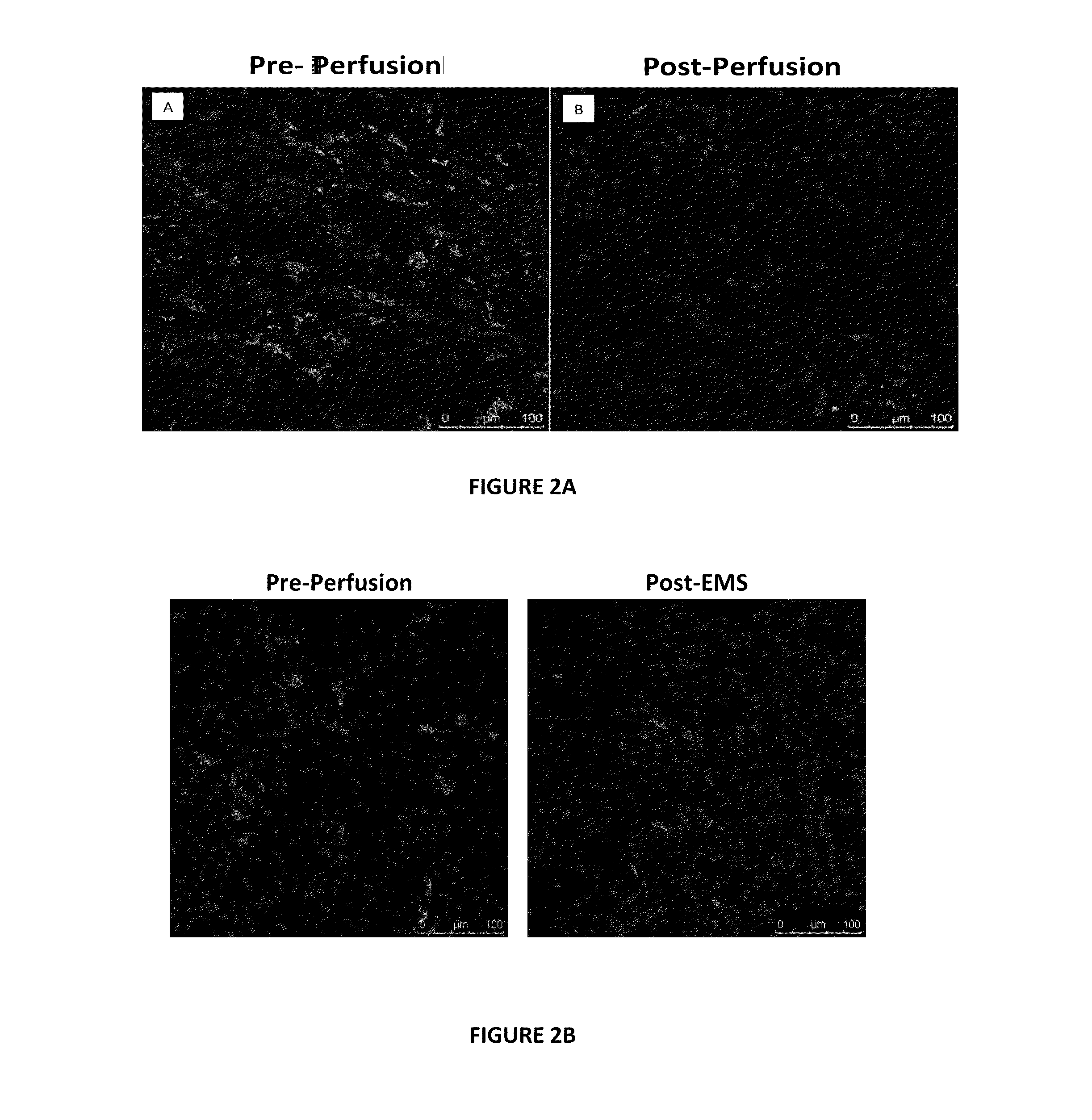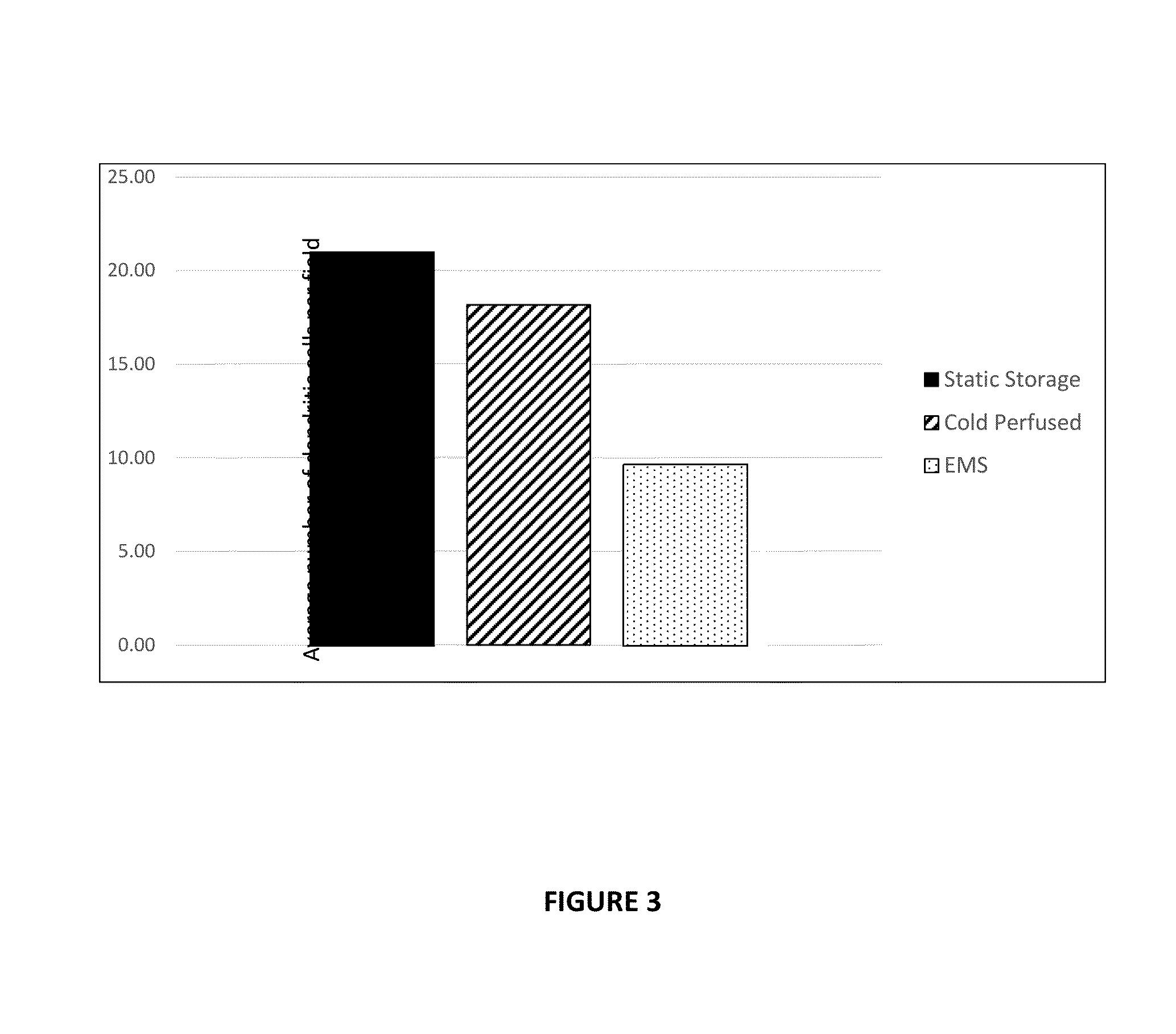Reducing the immunogenicity of allografts
a technology of allografts and immunogenicity, which is applied in the field of reducing the immunogenicity of allografts, can solve the problems of non-responsiveness to antigens, inability to deliver co-stimulatory signals, and large number of donor passenger leukocytes to remain trapped inside, etc., to achieve stable vasculature flow rate, stable perfusion pressure, and high energy compound
- Summary
- Abstract
- Description
- Claims
- Application Information
AI Technical Summary
Benefits of technology
Problems solved by technology
Method used
Image
Examples
example 1
Passenger Leukocyte (PL) Determination In Situ
[0292]This Example evaluates the potential of reducing immunogenicity of human renal allografts by eliminating the trapped passenger leukocytes.
Human Kidneys:
[0293]Human kidneys (n=46) from cadaveric heartbeating donors were procured for transplantation but later became available for research based upon standard institutional criteria. All the kidneys were received on static storage, although 34 of the kidneys (74%) had been hypothermically machine pumped prior to shipment. The other 12 kidneys were simply statically stored without hypothermic perfusion.
[0294]The kidneys were weighed, biopsied, cannulated and the vasculature flushed of cold preservation solution. All 46 of the kidneys were re-warmed by flushing with warm (32° C.) solution prior to initiating warm perfusion. All 46 of the kidneys were then established in a warm perfusion system as detailed below.
Warm Perfusion:
[0295]We used an acellular Exsanguinous Metabolic Support (EMS...
example 2
PL Migration Determinations
[0306]When performing the warm perfusion study of Example 1, samples of recirculating perfusion solution were collected at various time points to investigate the migration of passenger leukocytes from the kidney throughout the 24 hour perfusion step.
[0307]Samples of recirculating perfusion solution were collected at 6, 14 and 24 hours from the warm perfusion system. The recirculating perfusion solution was collected and centrifuged to collect any cells that had migrated out from the kidney into the circulation. Since the perfusate solution is acellular, any cells found in the perfusion solution originated from the kidney itself. The total pelleted cell population was resuspended and the concentrations were determined by cell counting. The phenotypes of the passenger leukocytes collected from the perfusion solution was determined by indirect immunofluorescence staining with a panel of antibodies by flow cytometry, as described in Example 1.
[0308]The number ...
example 3
Lack of PL Migration in Hypothermically Preserved Allografts
[0309]To investigate the effect of performing the ex vivo perfusion step at a physiologic (warm) temperature, a study was performed to compare the numbers of passenger leukocytes trapped within the kidneys when using (i) warm perfusion; (ii) hypothermic perfusion; and (iii) no perfusion (ie. static preservation).
[0310]Paired kidneys were used in the investigation. One half of kidney pair was warm perfused (n=8), whilst the other was either hypothermically at 4° C. perfused (n=5) or preserved statically (n=3). Using the method described above for Example 1, the number of passenger leukocytes trapped within the kidneys was investigated after 24 hours of perfusion or static preservation. The results are shown in FIG. 4.
[0311]In the statically stored kidneys the mean population of passenger leukocytes was approximately 21 (+ / −16.4) cells per field. In the kidneys that were hypothermically perfused, the mean population of passen...
PUM
| Property | Measurement | Unit |
|---|---|---|
| temperature | aaaaa | aaaaa |
| temperature | aaaaa | aaaaa |
| temperature | aaaaa | aaaaa |
Abstract
Description
Claims
Application Information
 Login to View More
Login to View More - R&D
- Intellectual Property
- Life Sciences
- Materials
- Tech Scout
- Unparalleled Data Quality
- Higher Quality Content
- 60% Fewer Hallucinations
Browse by: Latest US Patents, China's latest patents, Technical Efficacy Thesaurus, Application Domain, Technology Topic, Popular Technical Reports.
© 2025 PatSnap. All rights reserved.Legal|Privacy policy|Modern Slavery Act Transparency Statement|Sitemap|About US| Contact US: help@patsnap.com



